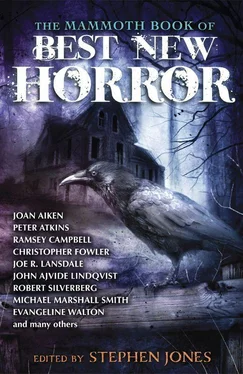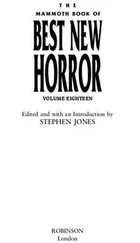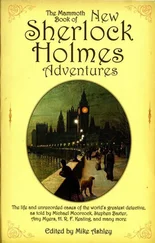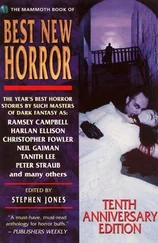TV show tie-ins included Warehouse 13: A Touch of Fever by Greg Cox, and Supernatural: One Year Gone by Rebecca Dessertine and Supernatural: Night Terror by John Passarella. The Walking Dead: Rise of the Governor was credited to the comic series creator Robert Kirkman and Jay Bonansinga.
The Coming of the Terraphiles was a Doctor Who tie-in by none other than Michael Moorcock, while Paul Finch authored Doctor Who: Hunter’s Moon .
To tie-in to the spin-off series, Sarah Pinborough wrote Torchwood: Long Time Dead , while Torchwood: The Man Who Sold the World was by Guy Adams.
Tim Waggoner teamed up with Jason Hawes and Grant Wilson, the stars of the Syfy reality TV show Ghost Hunters , for the novel Ghost Trackers .
Mark Morris’ Dead Island and B. K. Evenson’s Dead Space: Martyr were both based on the video games. The tie-in to the post-apocalyptic Rage was written by Matthew Costello, who also contributed to the development of the video game it was based upon.
Arkham Horror: Dance of the Damned was the first volume in Alan Bligh’s “Lord of Nightmares” trilogy, a gaming tie-in inspired by the work of H. P. Lovecraft. From the same author, Arkham Horror: Ghouls of the Miskatonic was the first book in the “Dark Waters” series.
Nightmare Movies: Horror on Screen Since the 1960s was a welcome reissue of Kim Newman’s encyclopaedic 1988 volume, totally re-written, revised and updated.
Covering much of the same ground, Jason Zinoman’s Shock Value looked at the genre filmmakers of the 1960s and 1970s.
Bob McCabe’s Harry Potter: Page to Screen weighed in at a hefty 540 pages.
The first volume in the “Deep Focus” series of film criticism books from Counterpoints/Soft Skull Press was They Live , a look at the 1988 John Carpenter film by Jonathan Lethem.
Triumph of the Walking Dead: Robert Kirkman’s Zombie Epic on Page and Screen was an unauthorised guide to the comic book and TV series, edited with an Introduction by James Lowder. The book included fifteen essays by Lisa Morton, Kim Paffenroth and Jay Bonansinga, amongst others, along with a Foreword by Joe R. Lansdale.
Supernatural: Bobby Singer’s Guide to Hunting was a tie-in to the TV series by David Reed.
The Gothic Imagination: Conversations on Fantasy, Horror, and Science Fiction in the Media featured interviews between John C. Tibbetts and such writers as Stephen King, Ray Bradbury, Gahan Wilson, Robert Bloch, Ramsey Campbell, Brian Aldiss and others.
Attendance figures at the US box-office hit a sixteen-year-low in 2011, with a drop of approximately 3.6 per cent on revenues from the previous year. The reason for this could be that films are available on an increasing number of platforms, which no longer means that you have to go to your neighbourhood movie theatre to see them.
History also has a tendency to repeat itself, so it was no surprise that the 3-D “revolution” in films and TV looked ready to stall in 2011 — just like it had done previously in the 1930s, 1950s and 1980s. At the cinema, audiences proved reluctant to pay extra just for the (often shoddy) 3-D experience, while 3-D television sets were still prohibitively expensive for most people, not helped by a lack of product to show on them.
Still, that didn’t stop Warner Bros. from releasing the eighth movie in the Harry Potter series in 3-D, the first to be shown in the process. Despite the final film in the franchise being something of a disappointment after the solid storytelling of the previous entries, Harry Potter and the Deathly Hallows Part 2 smashed all records before it, clocking up the highest-grossing opening weekend ever ($168.55 million) in July, beating The Dark Knight, Spider-Man 3, The Twilight Saga: New Moon and Pirates of the Caribbean: Dead Man’s Chest . The film went on to pass the $200 million point in just five days, and achieved a world-wide take of $900 million ten days after that.
In the UK, the film broke box-office records by taking £23 million over its opening weekend, beating the previous entry’s £18.32 million, and the eight Harry Potter movies are now officially the highest-grossing film franchise ever.
“Inspired” by Tim Powers’ superior novel, Rob Marshall’s 3-D Pirates of the Caribbean: On Stranger Tides , the entertaining fourth instalment in the Disney franchise, involved zombified sailors and murderous mermaids as Johnny Depp’s increasingly silly pirate Jack Sparrow joined Ian McShane’s sorcerous Blackbeard and his duplicitous daughter (Penélope Cruz) in a race to find the fabled Fountain of Youth.
Matt Damon’s New York politician was warned by Terence Stamp’s mysterious man in black that his life was destined along a different path in The Adjustment Bureau , based on a story by Philip K. Dick.
Dick could just as well have been the inspiration for Neil Burger’s Limitless , in which Robert De Niro’s ruthless businessman wanted the secret of the “smart pill” that allowed Bradley Cooper’s struggling novelist to access the unused areas of his brain.
Jake Gyllenhaal found himself living two separate lives in Duncan Jones’ Source Code , which bore more than a passing resemblance to Deja Vu (2006), while Justin Timberlake was living on borrowed time in the near-futuristic In Time . The latter movie was briefly the subject of a lawsuit by Harlan Ellison, who claimed that the film infringed upon his story “‘Repent, Harlequin!’ Said the Ticktockman”.
Gwyneth Paltrow was the first victim of a viral epidemic in Stephen Soderbergh’s Contagion , an all-star version of the kind of disaster films regularly churned out by the Syfy channel. Made for a fraction of that film’s budget, Perfect Sense featured Eva Green and Ewan McGregor’s characters falling in love as a world-wide epidemic robbed people of their sensory perceptions.
2011 was certainly the year for alien invasions at the cinema. Based on a comic book, Jon Favreau’s $163 million Cowboys & Aliens was executive produced by Steven Spielberg but it failed to deliver the thrills, despite teaming Daniel Craig and Harrison Ford against alien invaders in the Wild West.
J. J. Abrams’ $50 million homage to producer Spielberg, Super 8 , was a summer movie about a group of school friends who witnessed a spectacular train crash and became involved with an escaped extraterrestrial who just wanted to go home.
Aaron Eckhart’s military veteran led a platoon of soldiers and some jittery camerawork against an alien invasion in the noisy Battle: Los Angeles , while a group of young people were trapped in a Moscow invaded by aliens through the power supply in The Darkest Hour .
British sci-fi nerds Simon Pegg and Nick Frost picked up the eponymous alien escapee (voiced by a potty-mouthed Seth Rogen) in Greg Mottola’s likeable comedy Paul , which also featured Jason Bateman, Jane Lynch, Blythe Danner and Sigourney Weaver.
Nick Frost also turned up as a laid-back drug dealer in Joe Cornish’s inventive Attack the Block , which mixed its laughs with scares as toothy alien balls of fur met their match at the hands of a gang of urban teenagers on a South London estate.
Shia LaBeouf’s hapless hero Sam Witwicky teamed up with Victoria’s Secret model Rosie Huntington-Whiteley to battle the evil Decepticons in Michael Bay’s 3-D second sequel,Transformers: Dark of the Moon. Patrick Dempsey, Frances McDormand, John Turturro, John Malkovich, Buzz Aldrin and Leonard Nimoy (as the voice of “Sentinel Prime”) were lost amongst the special effects mayhem.
Читать дальше










